Is there a cooler genre of weapons than submachine guns?
Tiny, easy-to-handle machine guns in minimally recoiling calibers are a lot of fun.
My experience is limited to some training events during my Marine Corps days and industry events like SHOT Show.
However, I’ve always loved dumping magazines through subguns. It’s just so much fun.
And then there’s the cultural impact.
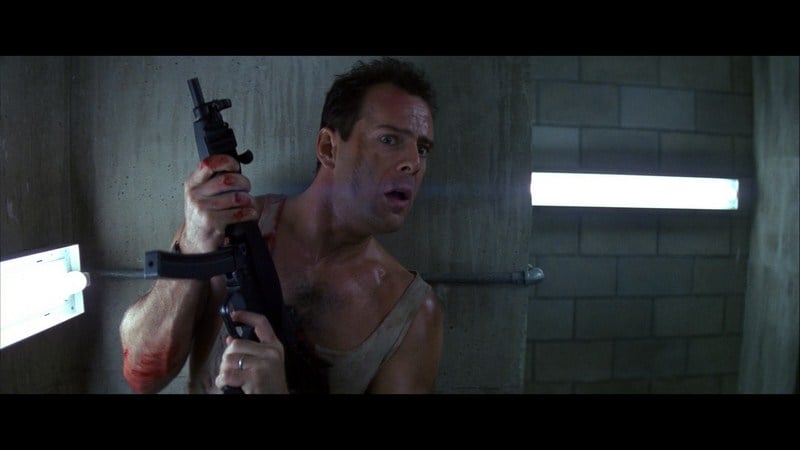
From gangsters wielding Tommy guns to John McClane killing German terrorists with MP5s, these guns easily capture our imagination.
But subguns also come with a fascinating history.
Submachine guns, or SMGs, were born of necessity and adapted to serve various roles.
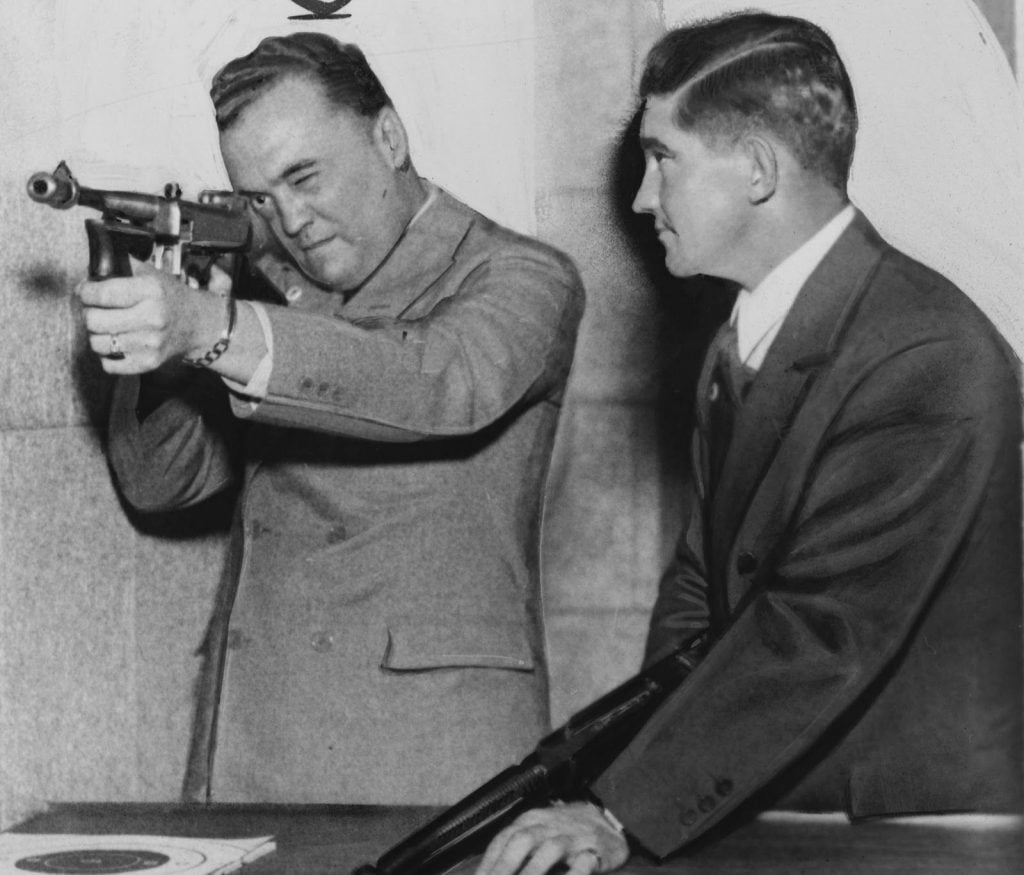
So why not explore the world of SMGs a little more? Today, we’ll examine the birth, rise, and current use of submachine guns.
By the end of this article, you’ll have a better grasp of how these iconic guns came to be.
Table of Contents
Loading…
What’s a Sub-Machine Gun?
The definition of a submachine gun is often regional.
In the western world, I’d say the most common definition is a compact firearm capable of selective fire that utilizes a pistol or non-rifle round.
The term submachine gun often encompasses machine pistols and personal defense weapons.
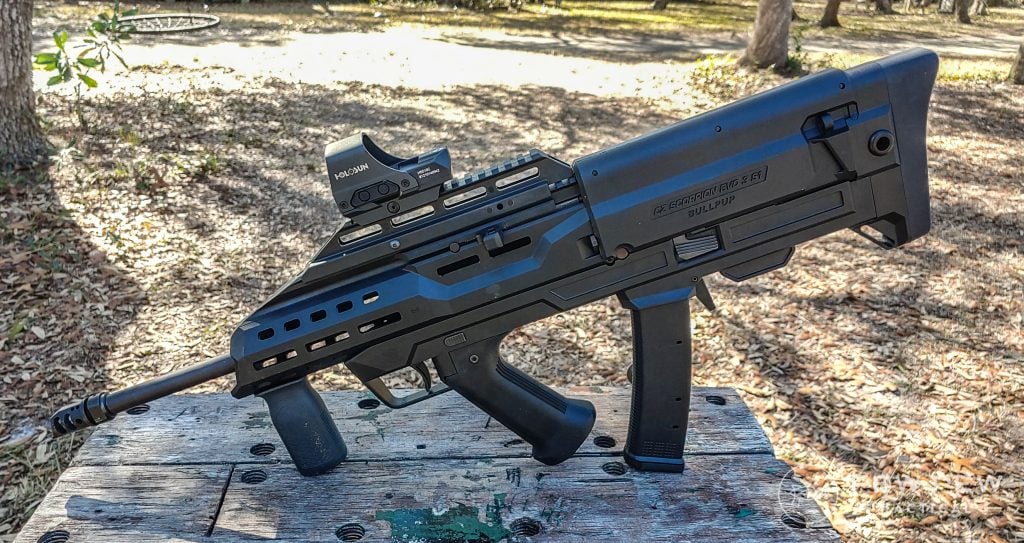
Machine pistols were some of the earliest SMGs and are often pistols capable of automatic fire.
It’s tough to draw the line between a machine pistol and a submachine gun.
Does an SMG require a stock? If so, then is the MP5K a machine pistol when it lacks a stock and the Beretta 93R with its optional stock a submachine gun?
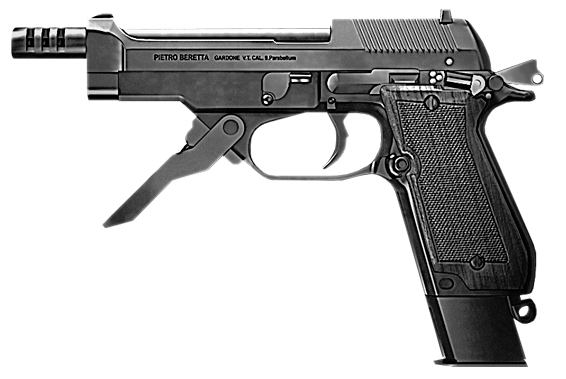
Ultimately, I feel they offer the same capabilities and fall under the same umbrella.
Personal defense weapons are a niche category of firearms that offer selective fire capability, and a compact package…but they don’t necessarily use a pistol round.
Their specialized, soft armor-piercing rounds fall in-between a rifle and pistol rounds.
Born of Necessity: WWI
World War I was a war fought with yesterday’s tactics but with modern (for the time) technology.
Modern firearms, including machine guns, repeating rifles, and modern artillery, sent men to the trenches.
Trenches offered incredibly close quarters situations but the arms at the time were massive bolt-action rifles.

Imagine leaping into a trench with your 43-inch long rifle, with its slow firing manual action.
With enemies feet away, you might get a single shot of 30-06 before it went hand to hand.
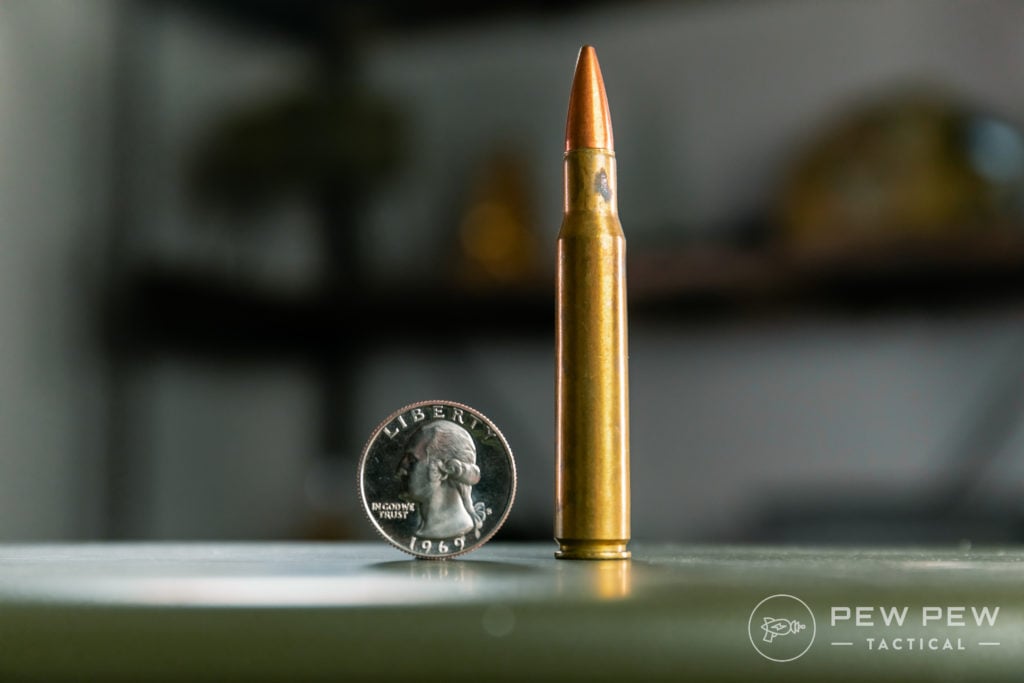
But what if you wielded a small, portable, rapid-fire weapon?
The machine guns of the time were massive, so that wasn’t possible.
Semi-auto rifles were popular, but pistols offered a compact platform. Unfortunately, handguns weren’t great at fighting.
So the question became, how can you make a pistol better for fighting?
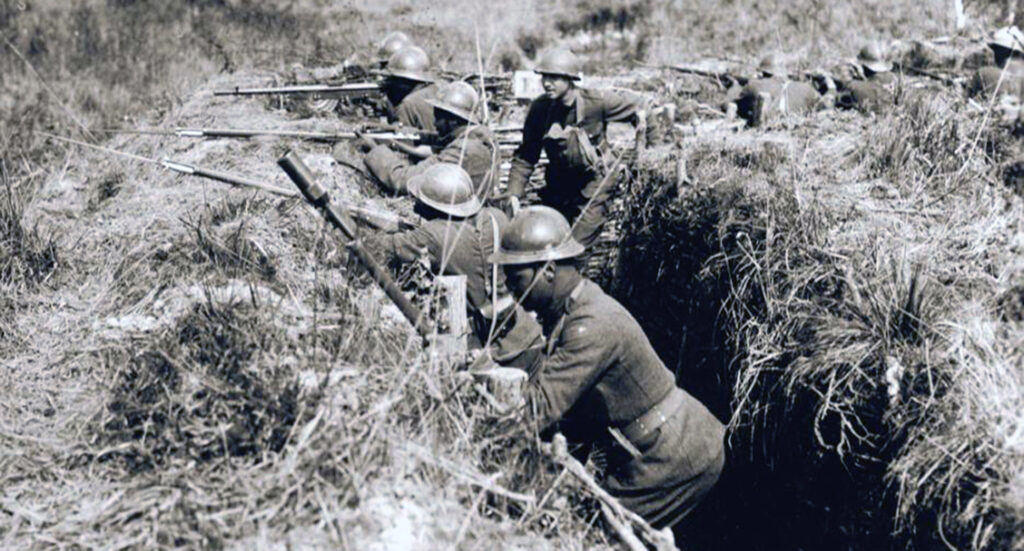
Machine pistols in World War I were never commonly used and more or less experimental as limited issue items.
However, the idea was born…
American gun designer and General John Thompson began the development of the Thompson Submachine gun.
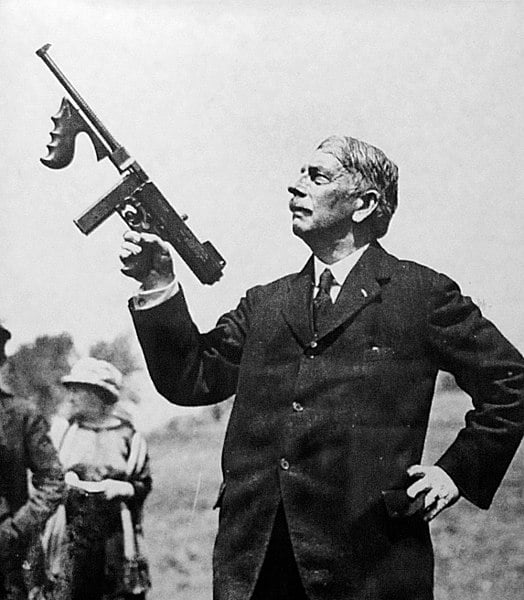
Meanwhile in Germany, a man named Theodor Germann started work on the German answer to SMGs.
And Italian designers began reducing aircraft guns to offer man-portable options.
In the end, the Italians and Germans won the race with the Beretta Model 1918, and MP 18 appearing in the last year of the Great War.
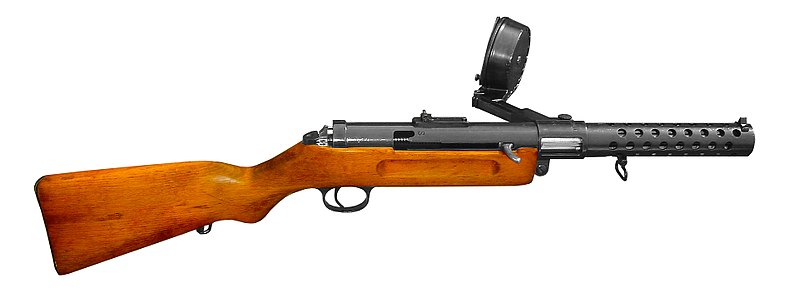
Who crossed the finish line first is still unclear.
Thompson’s guns never made it to the war effort, but development continued.
Prices accurate at time of writing
Prices accurate at time of writing
-
25% off all OAKLEY products - OAKLEY25
Copied! Visit Merchant
In fact, the development of SMGs continued across the world. The guns became rather famous, with military leaders acknowledging that these were very capable weapons.
So much so that the Treaty of Versailles specifically banned the production of SMGs for Germans.

American Gangster
As we entered the interwar period, the Thompson became a full-fledged and developed firearm.
While the Thompson SMG is undoubtedly one of the most famous SMGs ever, it was a bit of a flop when it first premiered.
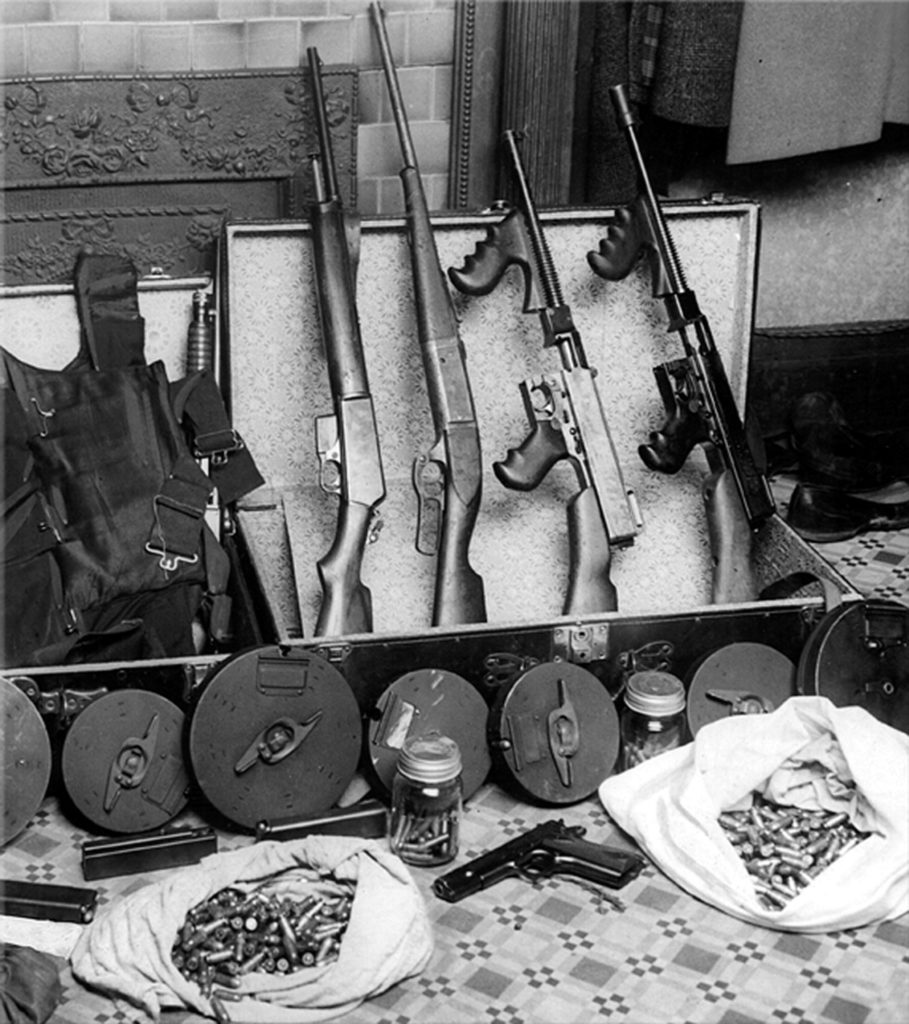
General Thompson intended for his gun to end the war by being the ultimate trench broom, but without a war to fight, who needed a submachine gun?
Plus, Thompsons were extremely expensive for the time. They sold for $200 in 1921, the equivalent of roughly $3,000 today.

What made the Thompson famous was its use by Prohibition-era criminals like Dillinger, Machine Gun Kelly, and Al Capone.
Still, it was nowhere near as common as the media portrays.
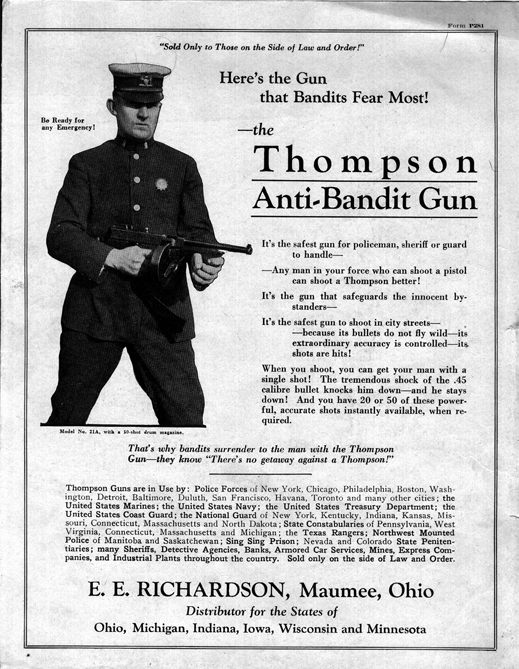
On a larger scale, SMG development around the world was slow. Sure they were handy in a war, but the world was rebuilding from the Great War. New arms weren’t a major concern.
Major design improvements didn’t come until the world was once more plunged into multi-continent war.

The SMG War: World War II
World War II could be called the submachine gun war.
Development, design, and production of the submachine gun exploded. Everybody needed one, and everyone made one.
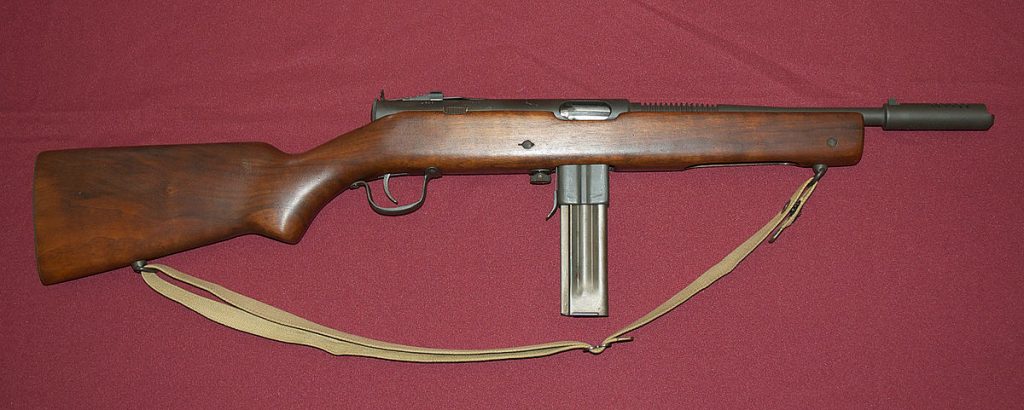
Americans and Brits fielded the Thompson in Europe with U.S. Marines using the Thompson and Reising SMGs in the Pacific.
The Germans developed the MP 38 and MP 40 to wage blitzkrieg across Europe.
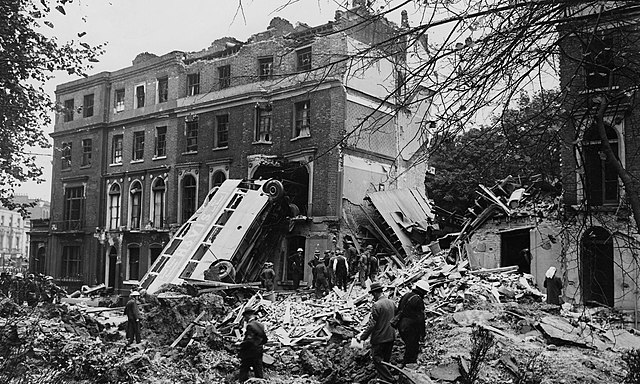
Meanwhile, the Italians developed the robust and beloved Beretta Modello 38.
And the British were scrambling for a cheap submachine gun to complement their long rifles. The Sten gun became the answer.
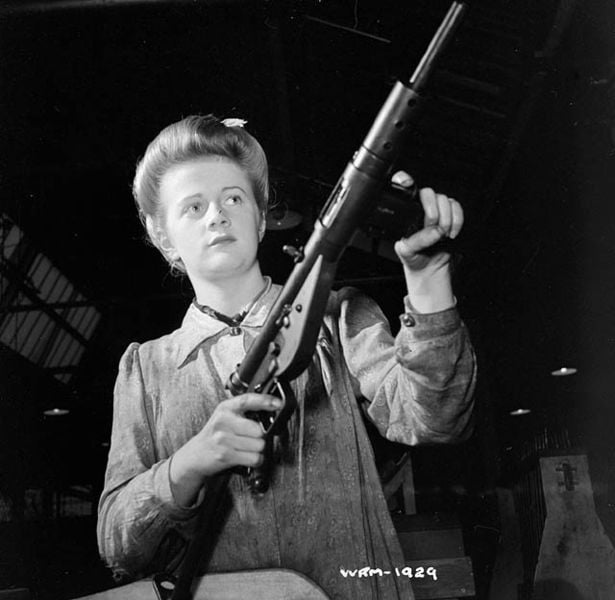
The Finnish fought off the Russian bear with Suomi KP/-31 guns and proved to be brutally effective in the Winter War.
Russians developed the PPD-40, the PPSh-41, the PPS series and showed some excellent design influences.
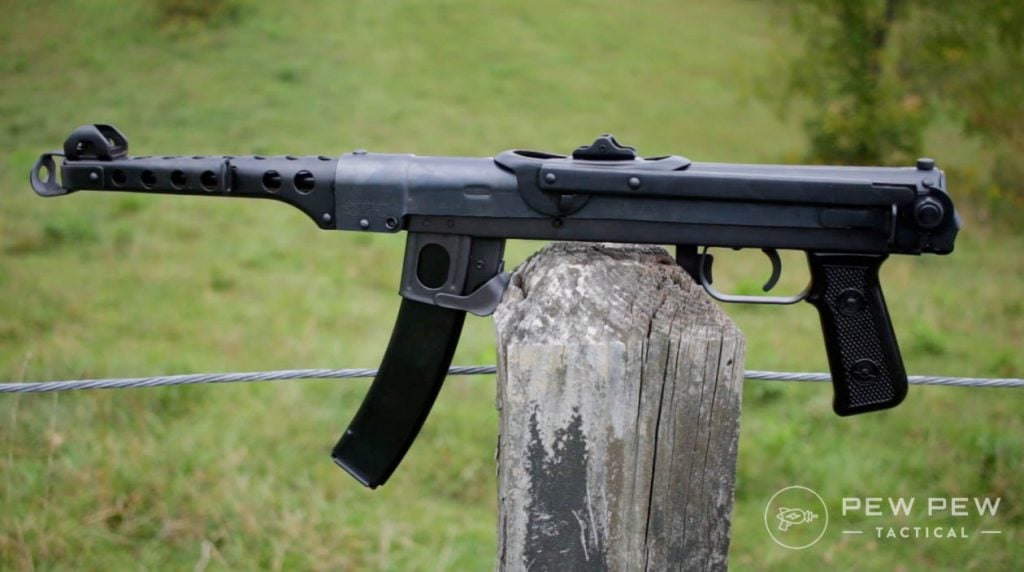
Later in the war, American forces produced the M3 — a cheaper to produce, easier to control, and more compact firearm.
The Japanese produced the 7,500 Type 100, which was a clone of the MP28. However, it fired the anemic 8mm Nambu.
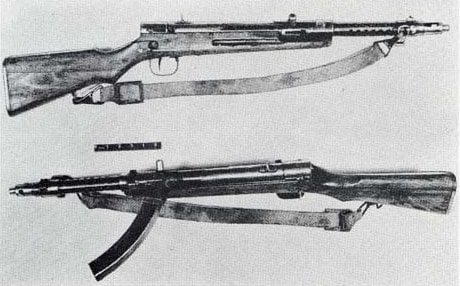
Even the French and Australians got in on the action with the French using the MAS-38 and the Australians turning to the Owen gun.
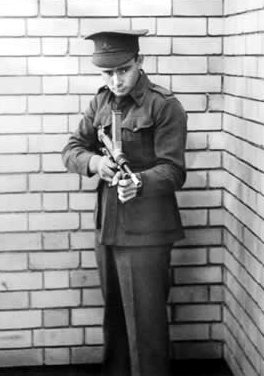
Everyone had some form of submachine gun, with some militaries using several types of SMGs.
World War II wasn’t fought in trenches like World War I.
This war was fought literally everywhere, particularly in urban environments and thick jungles. Both terrains favored short and rapid-firing weapons.
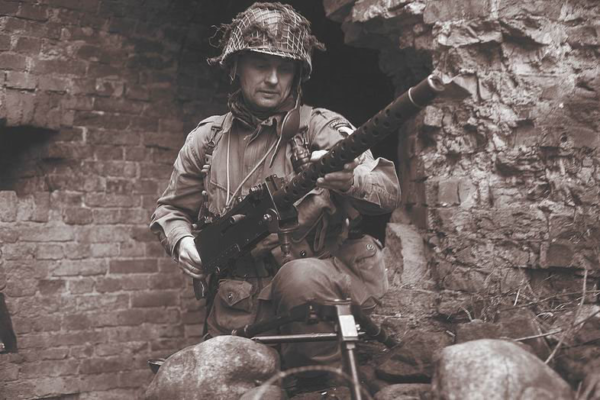
Maneuver warfare became the squad-level tactic of choice.
Submachine guns helped lay down the suppressive fire necessary to move and fight.
World War II also introduced more vehicular warfare and, for the first time, paratroopers. In these scenarios, the SMG was smaller, easier to wield, and more compact than battle rifles.
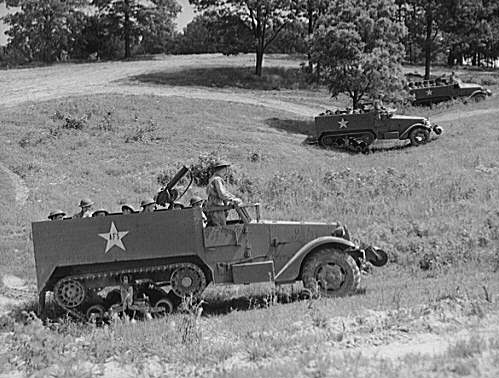
While SMGs varied in design, they all mostly beat the same drum.
These were open bolt, magazine, or drum-fed guns that fired pistol calibers. Smaller than rifles, they still weighed anywhere from 7 to 10 pounds.
Post WWII, Korea, & Israel
Lessons learned from World War II showed that fast-firing weapons were the future.
Semi-auto rifles and submachine guns were critical. However, SMG development didn’t change much.
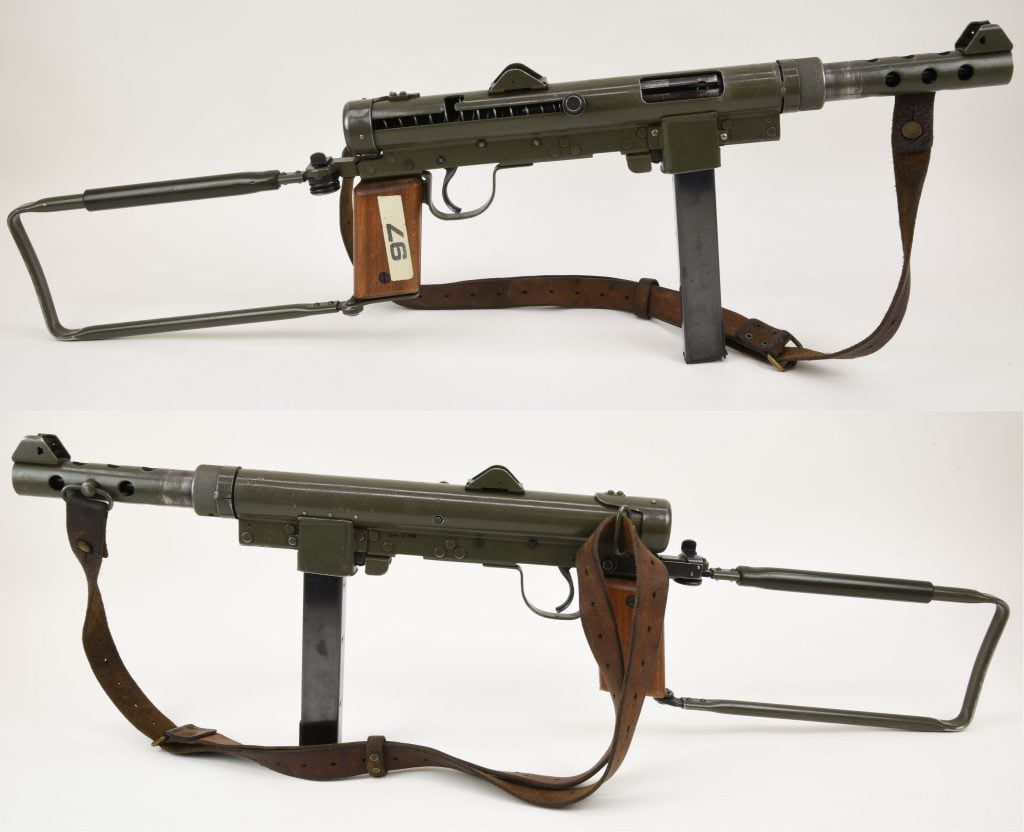
They got better, easier to produce, and often lighter during this period.
But most countries already had millions, so they weren’t keen to dump them just over small improvements.
In new SMGs, we saw the adoption of folding or collapsing metal stocks and a disregard for wooden furniture.
Notable SMGs of the time include the Carl Gustaf m/45 (aka the Swedish K) the French MAT-49.
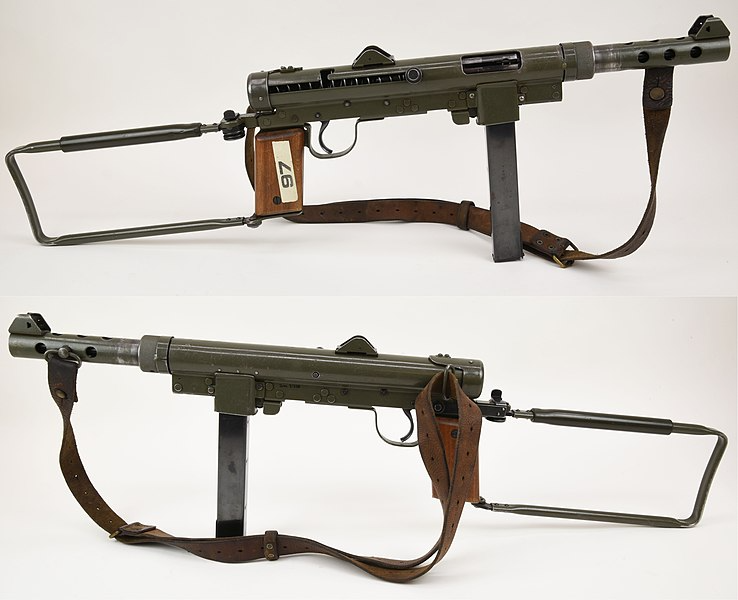
As America entered the Korean war, it found itself fighting communists armed with Russian PPSh-41s or Chinese and Korean clones of the gun.
These proved to be brutally efficient, offering a substantial amount of firepower that was tough to beat.
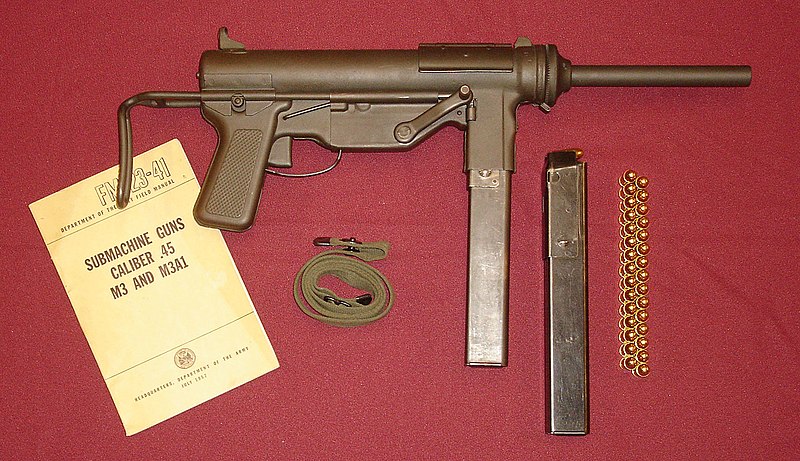
Americans wielded the M3 and M3A1 as well as the Thompson.
The M3A1 was the official standard issue, but Thompsons kicked around. My own grandfather wielded a Thompson in Korea during his tour.
Americans surprisingly found themselves on the business end of Thompson SMGs used by Chinese forces.
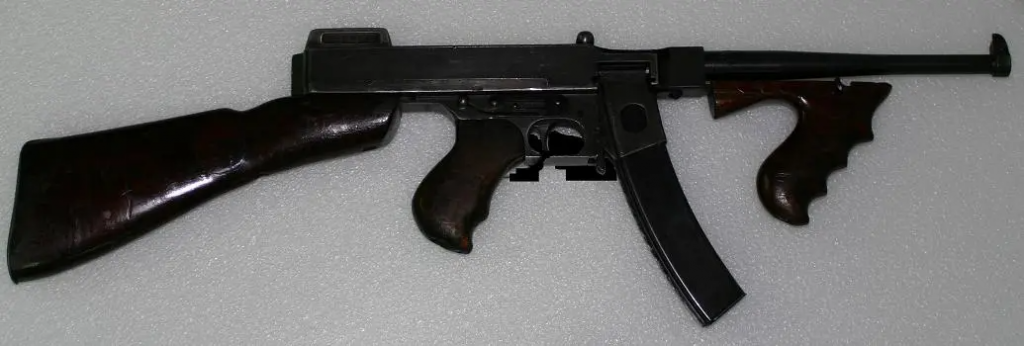
The Thomspon was sold in China, and local copies were even made of the gun. It wasn’t a major surprise to see them appear in Chinese hands.
In 1948, Uziel Gal designed the Uzi submachine gun. By 1951, it found a home in the hands of Israeli soldiers.
The Uzi would go on to serve admirably as part of the relative hodge-podge armory of Israel in the 1950s.
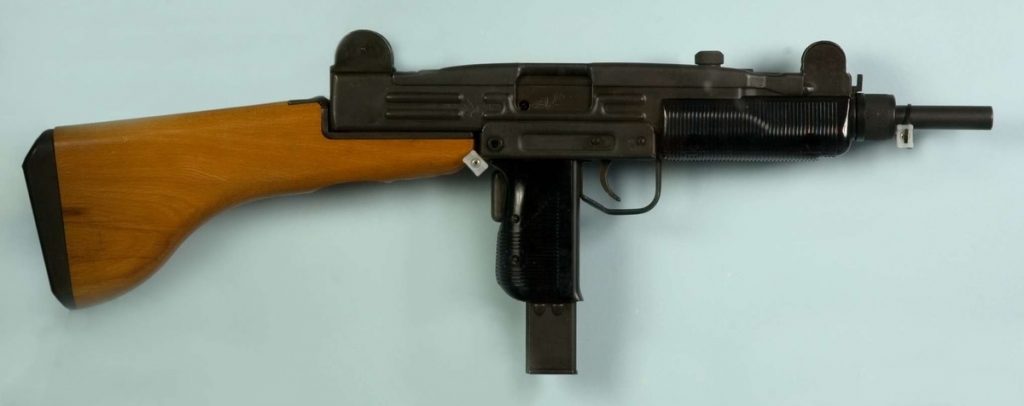
It saw action first in the Suez Campaign and was instrumental in clearing bunkers during the Six-Day War. It even saw action in the Yom Kippur War.
As such, the Uzi became a prolific submachine gun.
Using an open bolt design, it placed the magazine in the pistol grip to reduce the overall size of the gun.
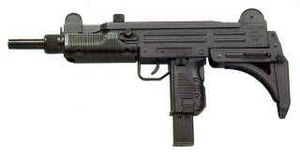
It delivered 32 rounds of 9mm and gave the Israelis a close-quarters fighting option.
For export purposes, the Uzi brought in over 2 billion in sales.
This includes a sale to the Secret Service who famously had it during an assassination attempt on President Regan.
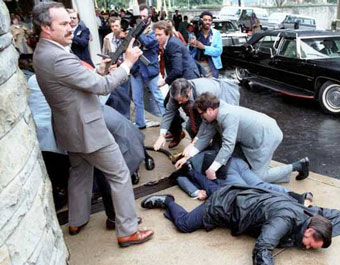
Into the Not So Cold War
Modern rifle technology slowly began to encroach onto the SMGs role.
The Russians produced the AK-47, which they thought combined both the positive traits of the rifle with that of the SMG.
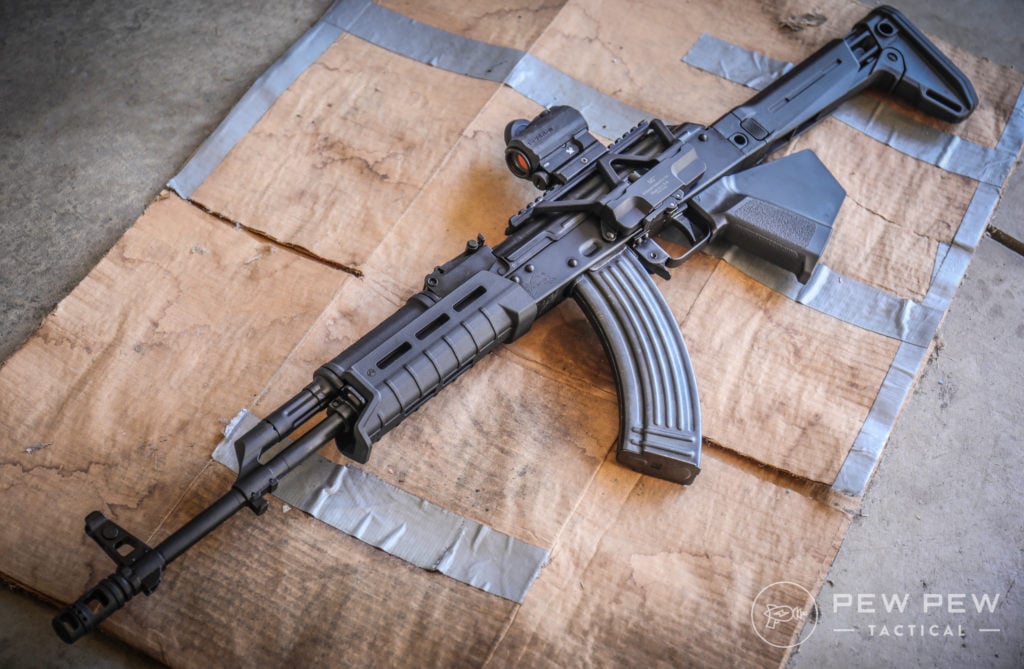
The American M14 was designed to replace the M1 Garand, the BAR, and the M3A1.
Rifles like the G3 and FN FAL became standardized and offered a higher capacity, more firepower, and select-fire capability.

When the Vietnam War came around, SMGs had been largely phased out of the hands of general infantry.
American forces gave South Vietnamese forces M3A1s and Thompsons to help the war effort. North Vietnamese forces used Chinese, Russian, and French SMGs alongside SKS and AK-47s.
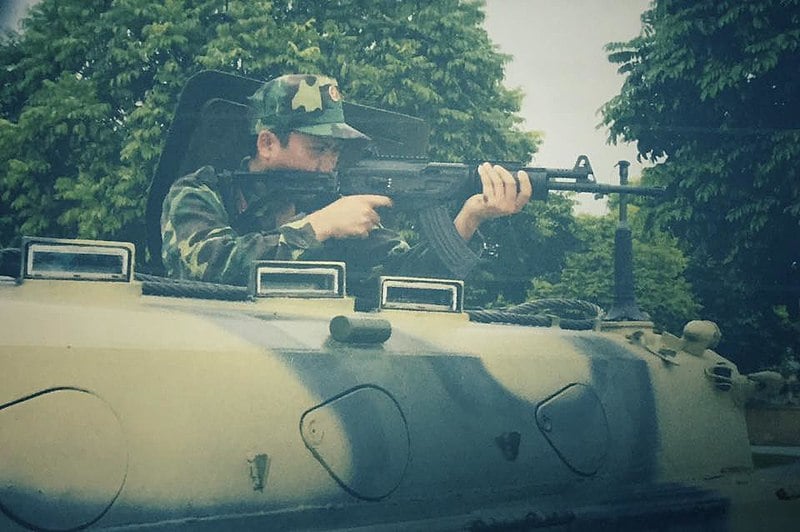
American CIA forces used the Swedish K in Vietnam, and some Special Ops troops used the M3A1, especially when equipped with a suppressor.
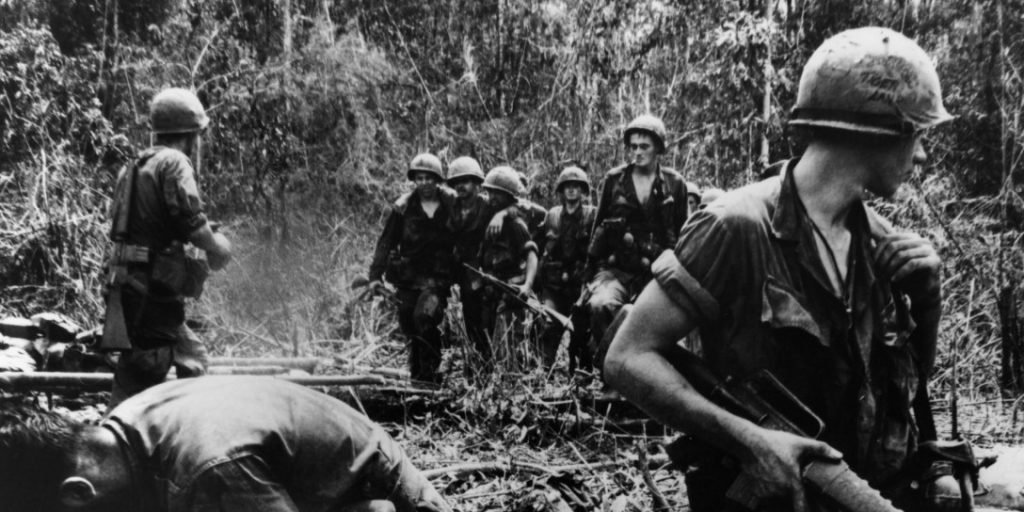
However, once the M16 became the standard issue rifle of the United States military, it was tough to go back.
It offered a light recoiling, rapid-fire, relatively compact weapon that offered more range, penetration, and power than an SMG.
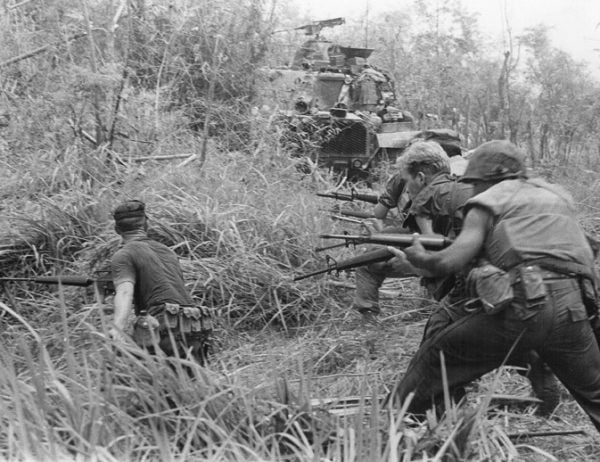
As the world entered the assault rifle age, SMG days were numbered.
Counter-Terrorism Roles
While the assault rifle ruled conventional military forces, the submachine gun found a new role.
Terrorism became a serious issue across the world as civil unrest grew in several countries for a multitude of reasons.
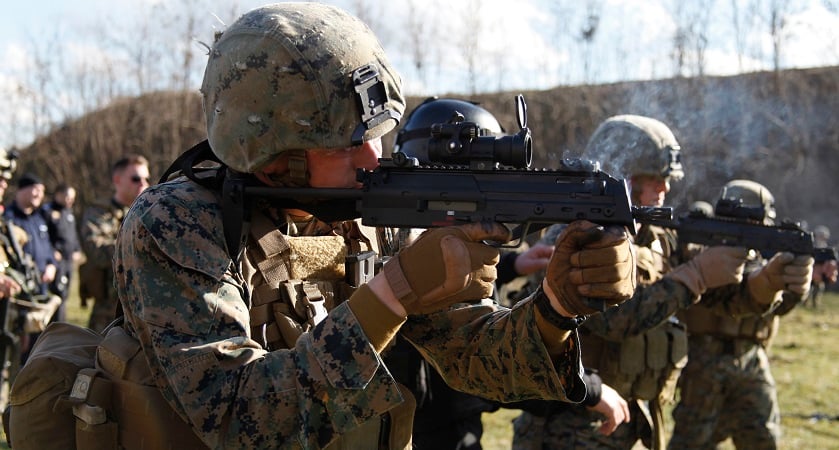
Counter-terrorism forces sprang up to respond to massacres, hostage situations, plane hijackings, and bombings.
These forces found themselves in need of something more than a pistol, but more compact than a rifle.
The submachine gun became the answer to the question.

Terrorism wasn’t happening in the open fields and planes of the great outdoors. It was happening in planes and cities. As such, a full-sized rifle was unwieldy.
The development of SMGs during this time was limited. We did see a small demand for smaller SMGs.
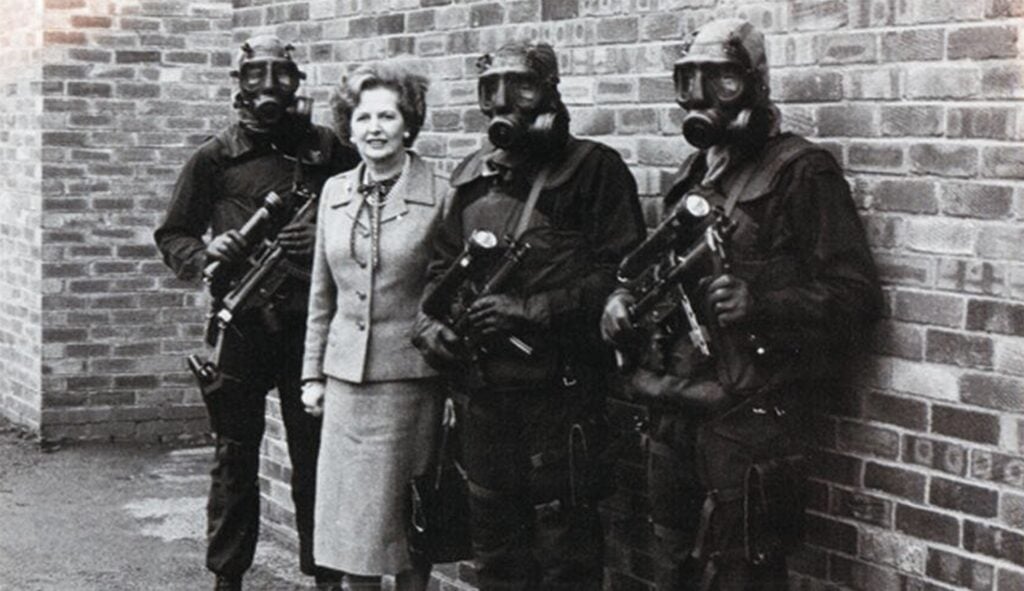
A shorter, easier to control option made the submachine the perfect choice.
While a hodgepodge of SMGs served across the world, they would soon be all outclassed by the arrival of the Heckler & Koch MP5 (then called the MP64) in 1966.

The MP5 became the Teutonic sword of justice with police, special operations, and counter-terrorism forces.
Unlike other SMGs of the era, the MP5 fired from the open bolt and utilized a roller-delayed system instead of direct blowback.
A delayed roller system reduced recoil significantly when compared to a direct blowback action.
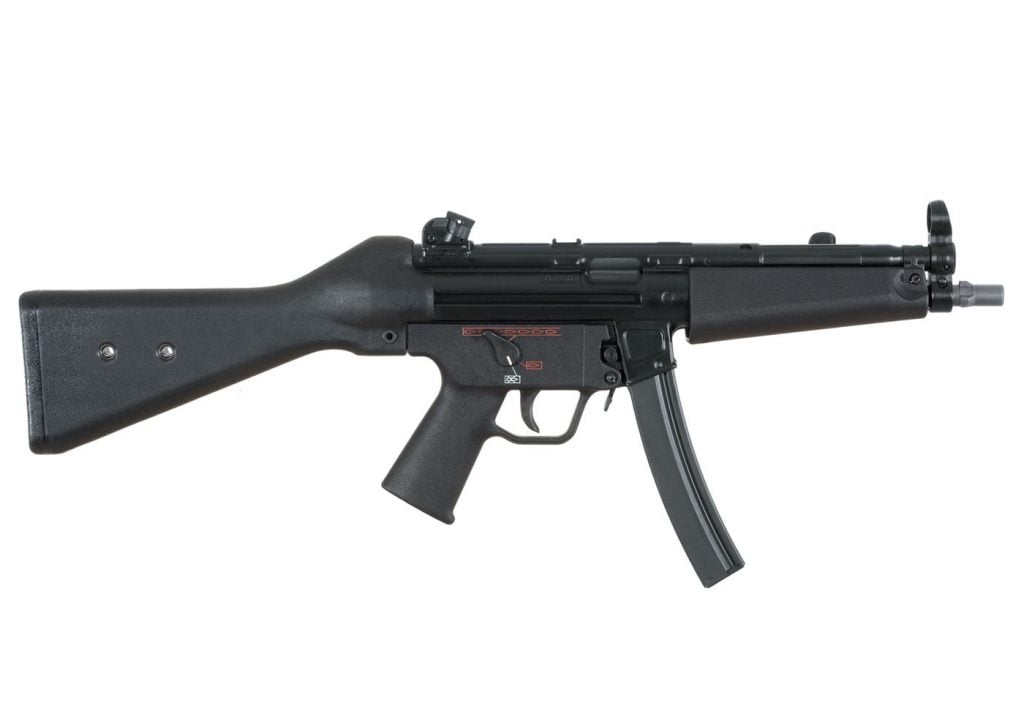
This lighter, modern SMG was adopted en masse and became the most iconic submachine gun in the world.
The MP5 became the SMG of Delta Force, Force Recon, the Navy SEALs, the SAS, GIGN, GSG 9, and dozens of other counter-terrorism and special operation forces.
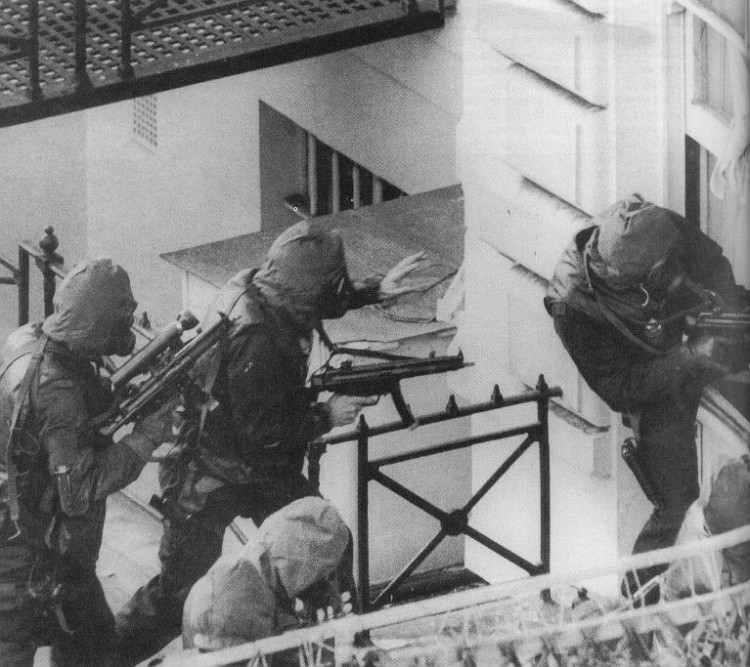
Operation Nimrod made the gun a household name after SAS commandos wielded MP5s to end a hostage situation at an Iranian embassy.
With Operation Nimrod, we saw the SMG enter the 1980s.
The 80s and 90s
In the 80s and 90s, the SMG remained largely a weapon of special operations units, counter-terrorism forces, and elite police units.
The MP5 largely ruled the roost, with the Uzi taking second place.
At the behest of an Austrian counter-terrorism unit EKO Cobra — admittedly a sick name for a counter-terrorism force — the Glock 18 was produced.
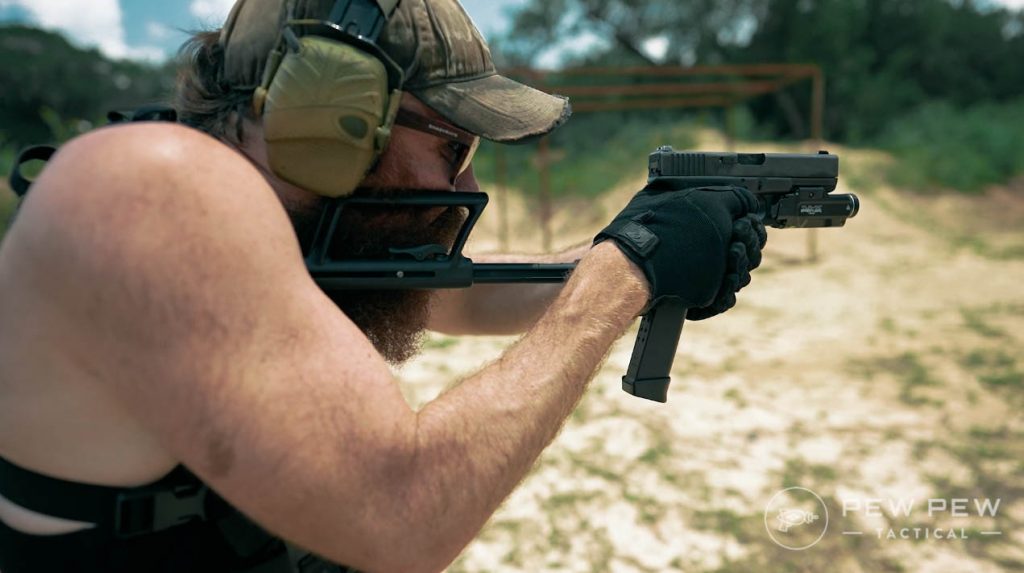
Like all machine pistols, it proved tough to wield.
Colt produced the Colt SMG creating an American-made alternative to the MP5 with AR-like controls. It saw some success, but nowhere near as much as the MP5.
Not much happened with the SMG world in the 80s and 90s, except, well, cocaine.

With cocaine came money and cocaine cowboys. But these cowboys weren’t wielding six guns, though. Nope, they often used submachine guns.
Though it officially began in 1979, the Miami Drug War was fought primarily in the ’80s.
Criminals obtained Uzis, MACs and converted TEC-9s to fully automatic. Much like the Prohibition Era, the use of these guns was rare but notable.
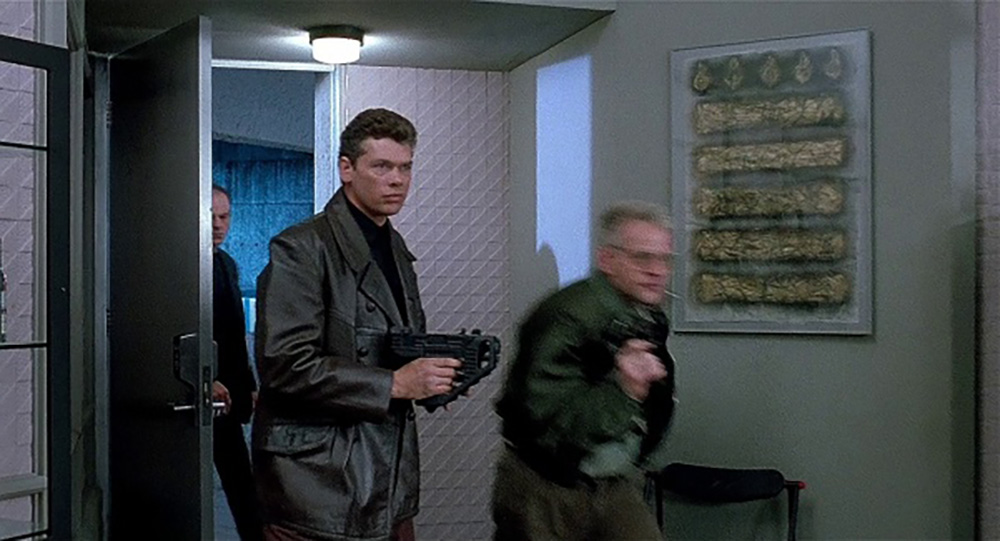
SMGs like the M3 were still used by tank crews in the Gulf War.
But, assault rifles continued to become more prevalent in both the east and west.
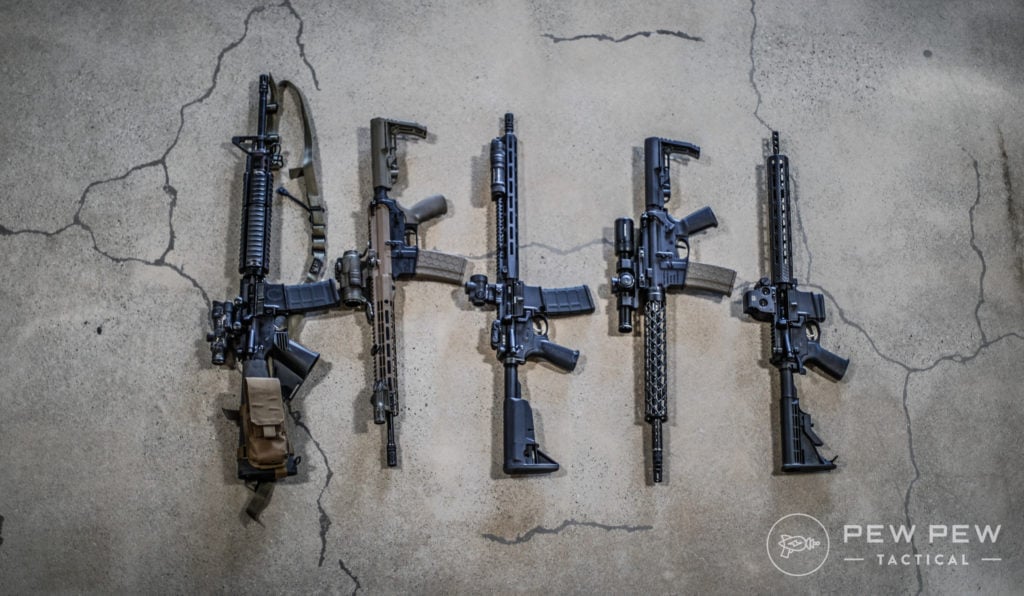
So, the SMG saw a further decline in popularity among countries outside of the United States and Western Europe.
The biggest contribution to SMGs in this generation was the P90 and PDW concept.
These weapons did not utilize a standard pistol round but a proprietary 5.7x28mm cartridge. FN later made a pistol to chamber the round.
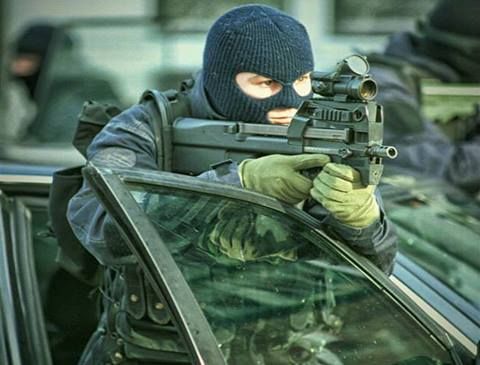
The P90 delivered a submachine gun that could pierce soft armor and extended the range of a submachine out to 100 yards effectively.
Notable users include the U.S. Secret Service and Stargate command.
Global War on Terror
The 2000s opened with what would become America’s longest war in the form of the Global War on Terror.
This was the war where SMGs saw their use come to a near close.
Some new SMGs have popped up and seen success, though.

The MP7 is a PDW-type SMG superbly popular with counter-terrorism forces, including SEAL Team 6.
SMG production didn’t stop either, and CZ released the Scorpion, Sig Sauer released the MPX, and Kriss released the famed Vector.
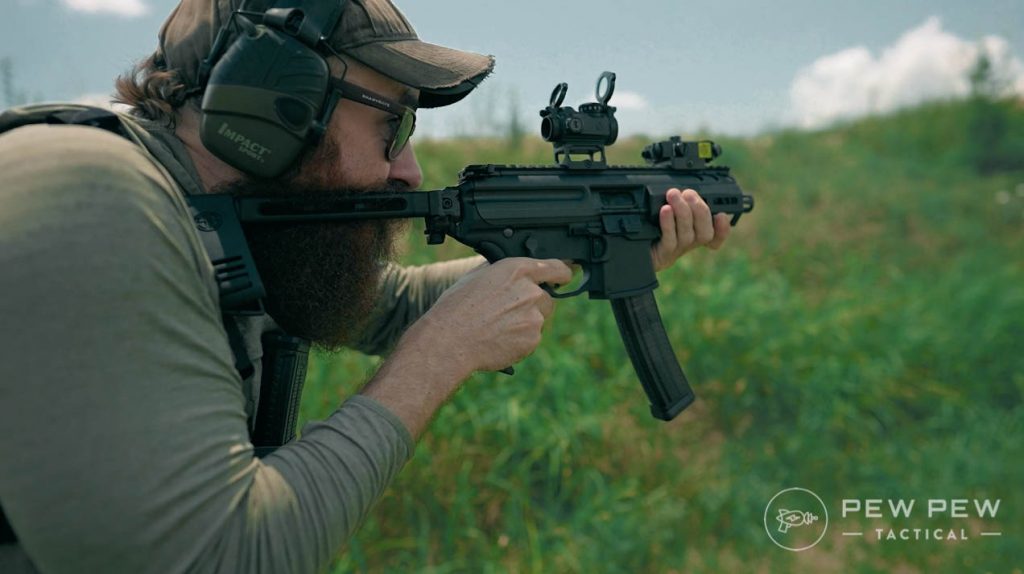
One of the biggest surprises in the last few years was the Army’s Subcompact Weapon program.
This contest had the Army searching for a new SMG to serve in the hands of bodyguards of important officials overseas.
The Army chose the APC9-K, and it became the first SMG adopted by the branch since the M3 grease gun.
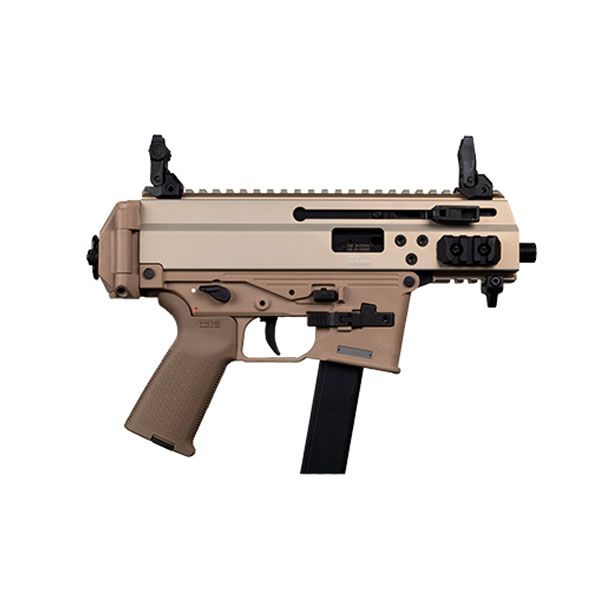
While the SMG isn’t dead, it has become a niche weapon, very similar to the shotgun.
Short carbines have largely replaced it in both military and police forces in the United States.
In parts of Europe and Asia, the SMG is still a very popular option for police forces and serves its role well.

Conclusion
Submachine guns might have fallen out of favor of professionals, but I think any of us would chomp at the bit for one.
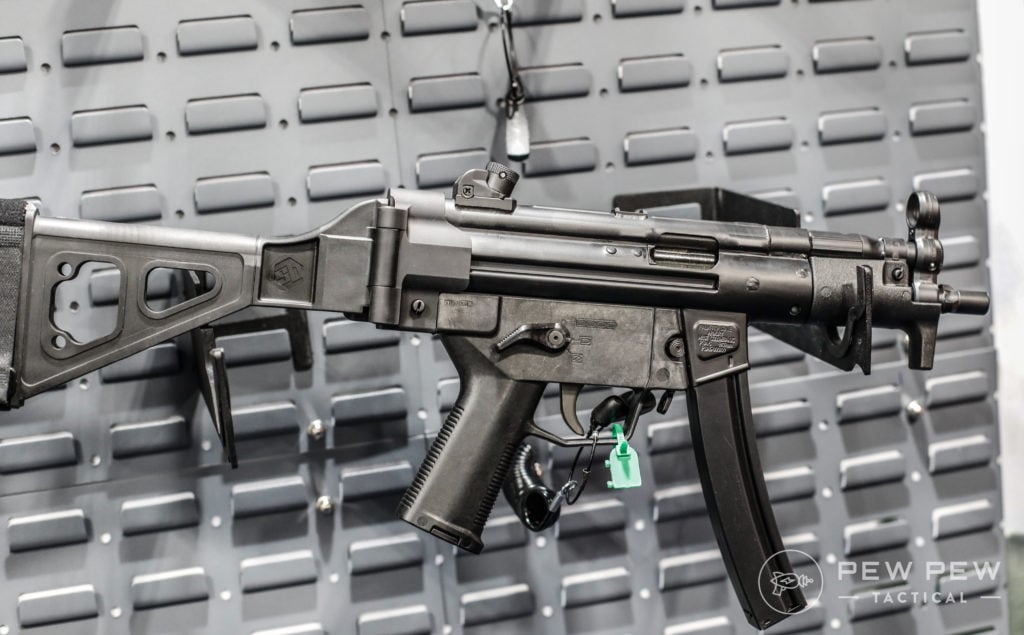
Who doesn’t want to shoot a Thompson, an MP5, or any other famous submachine gun?
These guns have served far and wide throughout dozens of wars and in a variety of different roles. They weaved a fascinating story through modern history.
What’s your favorite submachine gun? Let us know below. Ready to dive into full auto madness? Check out our article on the History & Evolution of Machine Guns.

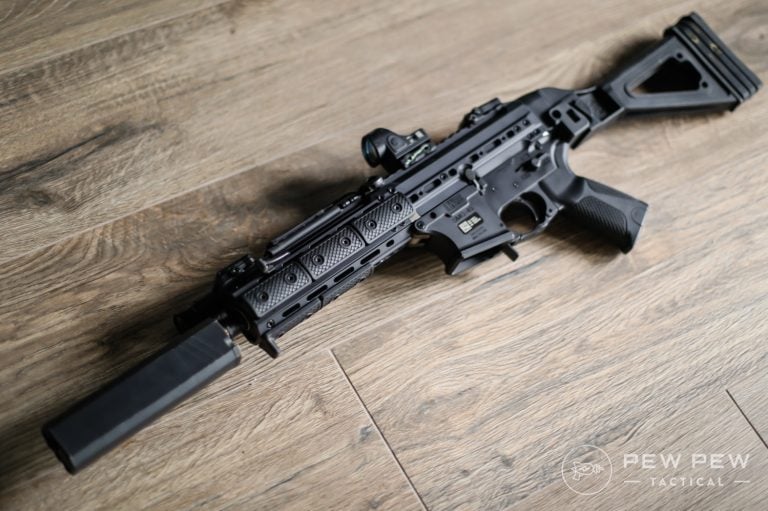
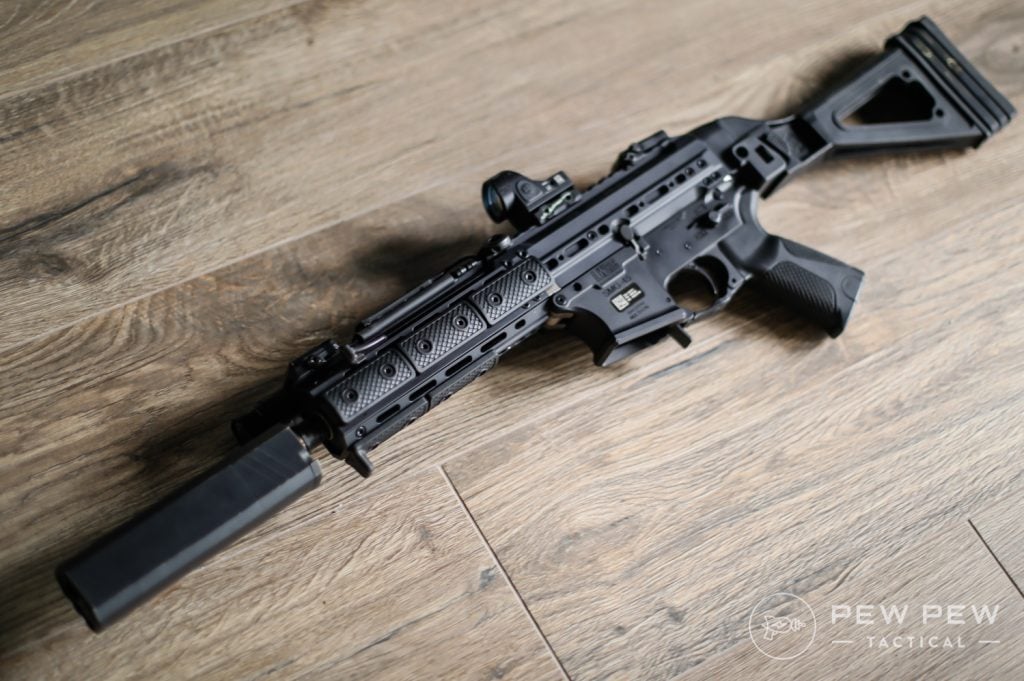








4 Leave a Reply
It's Theodor Bergmann, not Theodor Germann
What is that strapped to the top of the MP5 in the Margaret Thatcher picture? A Mag-Lite?
Yes during Operation Nimrod the SAS became famous for taping flashlights to the top of their MP5s. (As can be seen in the Operation Nimrod photo, the operative to the left)
Wow no Chuck Norris meme from delta force? Come on uzi and Chick Norris....